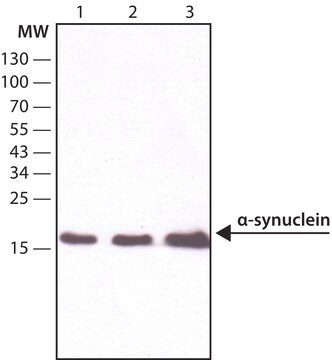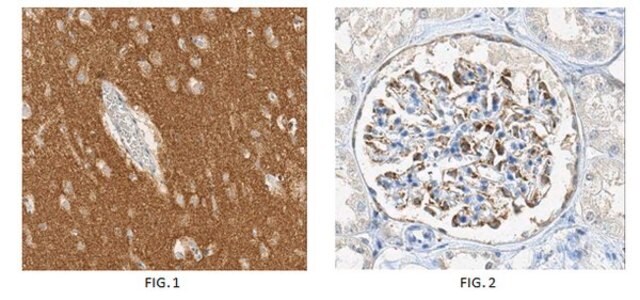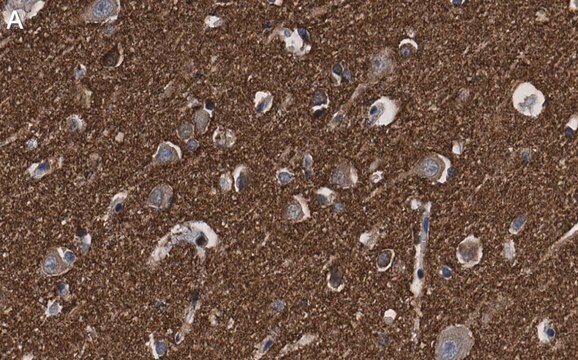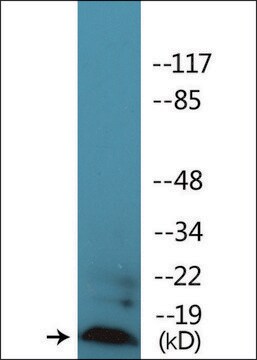MABN389
Anti-Aggregated a-Synuclein Antibody, clone 5G4
clone 5G4, from mouse, purified by affinity chromatography
Synonym(s):
Aggregated a-synuclein, Alpha-synuclein, Non-A beta component of AD amyloid, Non-A4 component of amyloid precursor, NACP
About This Item
Recommended Products
biological source
mouse
Quality Level
antibody form
affinity purified immunoglobulin
antibody product type
primary antibodies
clone
5G4, monoclonal
purified by
affinity chromatography
species reactivity
human
technique(s)
ELISA: suitable
immunohistochemistry: suitable
western blot: suitable
isotype
IgG1κ
NCBI accession no.
UniProt accession no.
shipped in
dry ice
target post-translational modification
unmodified
Gene Information
human ... SNCA(6622)
General description
Pepscan epitope mapping experiments showed that the epitope of 5G4 seems to be hidden inside full-length a-synuclein in aqueous solution, and this fact could depend on a specific conformation of the molecule. Thus, after conformational change, like b-sheet building, the binding structure of 5G4 may be accessible in biological samples.
This antibody can be used as a sandwich ELISA pair with Cat. No. MABN633, Anti-a-Synuclein, clone 10D2.
Immunogen
Application
Neuroscience
Neurodegenerative Diseases
ELISA Analysis: A representative lot from an independent laboratory detected Aggregated a-Synuclein in a sandwich ELISA with Cat. No. MABN633, Anti-a-Synuclein, clone 5G4 (Kovacs, G. G., et al. (2012). Acta Neuropathol. 123(1):37-50.).
Quality
Immunohistochemistry Analysis: A representative lot detected Aggregated a-Synuclein in brain tissue from a Parkinson′s disease patient.
Target description
Physical form
Storage and Stability
Handling Recommendations: Upon receipt and prior to removing the cap, centrifuge the vial and gently mix the solution. Aliquot into microcentrifuge tubes and store at -20°C. Avoid repeated freeze/thaw cycles, which may damage IgG and affect product performance.
Disclaimer
Not finding the right product?
Try our Product Selector Tool.
recommended
Storage Class Code
12 - Non Combustible Liquids
WGK
WGK 2
Flash Point(F)
Not applicable
Flash Point(C)
Not applicable
Certificates of Analysis (COA)
Search for Certificates of Analysis (COA) by entering the products Lot/Batch Number. Lot and Batch Numbers can be found on a product’s label following the words ‘Lot’ or ‘Batch’.
Already Own This Product?
Find documentation for the products that you have recently purchased in the Document Library.
Our team of scientists has experience in all areas of research including Life Science, Material Science, Chemical Synthesis, Chromatography, Analytical and many others.
Contact Technical Service







